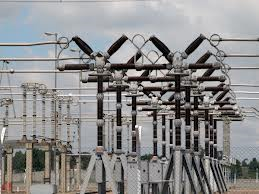Power generation hits 4,000 megawatts — official
 Power generation in the country has risen above 4,000 megawatts (mw) after hovering between 3,368.44 megawatts and 4,000 megawatts since June 15, according to a source in the ministry of power.
Power generation in the country has risen above 4,000 megawatts (mw) after hovering between 3,368.44 megawatts and 4,000 megawatts since June 15, according to a source in the ministry of power.
The ministry source, who pleaded anonymity, disclosed this to the News Agency of Nigeria (NAN) on Tuesday in Lagos.
The source said that after weeks of nationwide blackout, the nation’s power generation picked up a little, rising from 3,368.44 megawatts to 4,000 megawatts in the last few days.
He said that the country recorded less cases of pipeline vandalism in May and June.
“This is because the communities where the pipeline passes are more vigilant towards adequate surveillance of the pipeline networks”, the source said.
He explained that the industry had a near smooth supply of gas to the power plants and recorded a marginal rise in the generation of electricity due to less interruption of power installations.
“The slight improvement has been attributed to improvement in gas supply”, the source said.
He said that poor power generation in the last six months had been attributed to frequent vandalism of oil pipelines and destruction of vital infrastructure supplying gas to electricity generation plants.
The source said that in March, the country lost about 800 Mw of electricity as a result of the blasting of the Escravos – Lagos Gas Pipeline (ELGP) on March 11, 2015.
He said that the damage was done by vandals who ruptured the ELGP with an explosive device at Egwa, near Batan, Gbaramatu Kingdom, Delta State.
The ministry source said that the attack was the fourth in the year, adding that it came hours after the repairs of a pipeline earlier attacked was completed.
NAN reports that figures obtained from the Federal Ministry of Power showed that the country’s peak generation was 4,011.4MW, while energy generation was put at 3,540.42mw.
Energy sent out was 3,465.36mw.
Peak generation consists of the quantum of electricity held as spinning reserves and the amount of energy sent out to electricity distribution firms.
The country usually holds some quantum of electricity as spinning reserves in case of an emergency.
Peak demand and highest peak generated power were 12,800mw and 4,517mw, respectively in March 31. (NAN)

